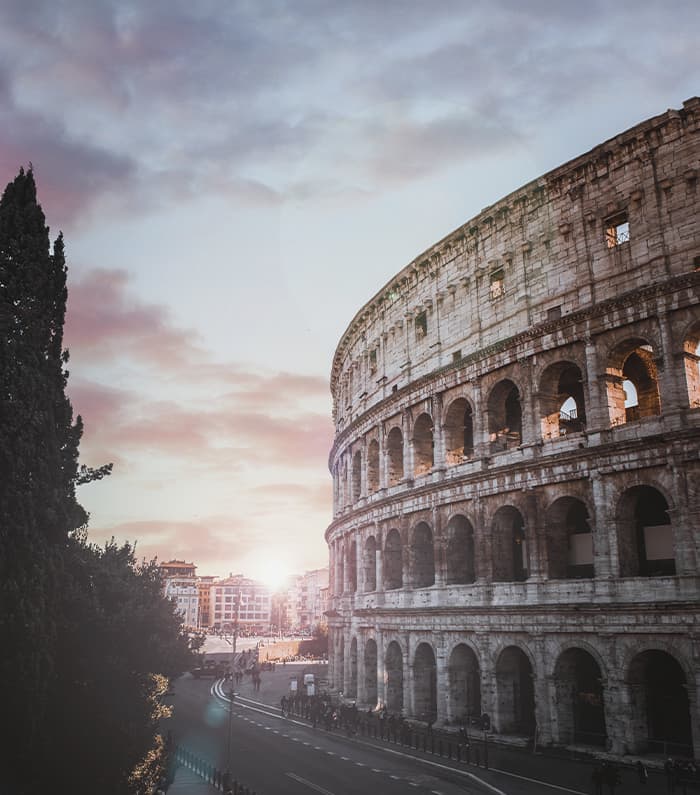Coliseum

The massive amphitheater, located near the Roman Forum in the heart of the city, is considered one of the most popular and recognizable sights in the world. For many, the Colosseum is a symbol of Rome – millions of tourists flock here every year.
Useful tourist tips about the Colosseum
- Be aware of the fact that the Colosseum, like other popular tourist sites, can be plagued by thieves, so be vigilant, watch your bags and wallet, and don’t leave things unattended.
- Stay away from the street vendors who occupy the area around the Colosseum, and don’t buy anything from them. The quality of their goods leaves much to be desired and their prices are inflated several times over.
- Wear as comfortable shoes as possible to walk on the uneven paths and steep steps of the Colosseum.
- Bring a bottle of water, especially if you plan to explore the amphitheater in detail. Even in the spring and fall in Rome, it can be very hot. It doesn’t hurt to eat well and grab a light snack beforehand, as you can wander the Colosseum for hours!
The Colosseum sees the smallest number of tourists and therefore no queues from November to February.
A little interesting about the Colosseum
The Colosseum was built in 70-72 AD by order of Emperor Vespasian of Flavius family as a gift to the people of Rome. Alas, the emperor never got to see his idea in all its glory – he died before the work was completed. The Flavius Arena – the original name of the Colosseum – was opened by Titus, son of Vespasian, who organized a 100-day marathon of games, gladiatorial battles and clashes between people and animals. At the opening ceremony of the Colosseum, all of Rome staged the event: the amphitheater could hold more than 50,000 people. All seats were free, but they were allocated according to the class of the spectators.
The Flavius Amphitheatre became a favorite entertainment arena for the Romans, who found special pleasure in watching fierce fights. Some enjoyed watching the fights between wild animals, others preferred the confrontation between animals and people, but the most popular spectacle was the battles of gladiators.
As an arena for battles the Colosseum served for 450 years, but gradually the gladiatorial and animal fights came to nought, thanks in part to the spread of Christianity. Since then, the amphitheater has been used for a variety of purposes: as a church, a cemetery, a fortress, and even a storehouse. In the middle of the 14th century, a major earthquake caused the southern part of the Colosseum to collapse completely, and the stones and pieces of marble that made it up were scattered to build other buildings.
As already mentioned, the Colosseum was originally known as the Flavius Amphitheatre. Where did its present name come from? There is a curious legend about it. In the 60s of the first century, Emperor Nero ordered a huge statue of himself, called the Colossus of Nero, for the imperial residence. The fate of the statue was very unusual: after the death of Nero, each new emperor considered it his duty to make adjustments to it, changing the head, the name or even all together. Emperor Hadrian went furthest, who decided to change not the statue itself, but its location, ordering to move it from the imperial residence to the pedestal set up near the Flavius amphitheater. Many historians believe that it is with the statue of Colossus that the origin of the name “Colosseum” is connected.